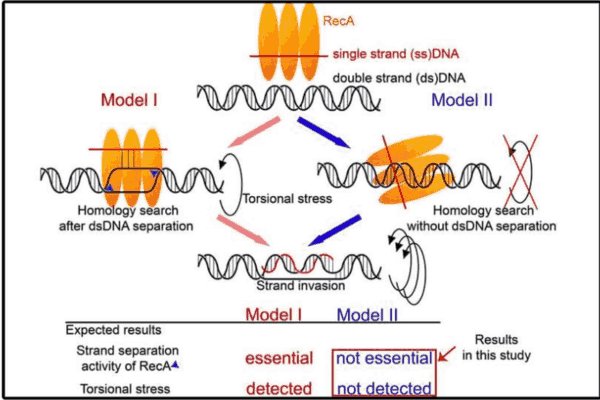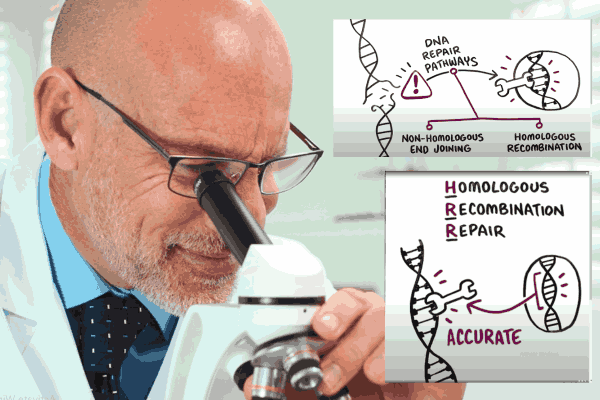Scientists at Tokyo Metropolitan University have conducted pioneering research into the complexities of DNA repair via Homologous Recombination (HR), revealing new opportunities for Cancer treatment.
Homologous Recombination Unveiled
Homologous Recombination: An Important DNA Repair Mechanism
The process of Homologous Recombination (HR), a biochemical wonder that is common to all living organisms, lies at the center of DNA repair. Tokyo Metropolitan University scientists, headed by Professor Kouji Hirota, found the essential stages in HR process which focused on RecA protein’s role in repairing breaks within double-stranded DNA.
Navigating the Double Helix
Precision of RecA – Repairing DNA Breaks Without Unwinding
This is opposite to the earlier assumptions, but during homology search RecA inserts only one end of a single-strand into double helix without unwinding it. This accuracy brings a new aspect to the concept of DNA repair, undermining existing models.
Homologous Recombination Process
Strand Invasion—The Complex Dance of DNA Repair
HR moves through a carefully choreographed sequence of steps. Resection reveals a single-strand break in the DNA. This exposed strand is bound by RecA and another undamaged double-stranded DNA molecule. The protein then sets out to discover the correct sequence and initiates strand invasion. This complex dance finally ends with the repair of broken DNA using intact DNA as a template.
Competing Models Tested
RecA’s Role – Unwinding or Not?
The Tokyo Metropolitan University team sought to reveal the secrets of HR by testing two competing models. Is it RecA that unwinds a section of the double strand during homology search or does only happen in case of strand invasion? Their conclusions support the latter, making an important contribution to understanding how HR works.

Clinical Relevance: Implications for Cancer Research
Homologous Recombination and Breast Cancer: Genetic Linkages Revealed
It is vital to understand the HR, especially in relation to factors involved with breast cancer such as BRCA1 and BRCA2. These factors are important in loading single-stranded DNA onto RAD51, the human homolog of RecA. It is possible that defects in BRCA1 or BRCA2 may inhibit HR, and thus contribute to the high prevalence of breast cancer among individuals with hereditary deficits.
DNA Repair Mechanisms in Cancer Therapy
HDR and Cancer Treatment – A Strong Relationship
The research not only reveals the complexity of HR but also provides information on homology directed repair (HDR), fork protection, and gap suppression. The relevance of HDR in preserving genome integrity carries deep consequences for cancer treatment. The knowledge of these DNA repair mechanisms allows researchers to lay the ground for highly selective and efficient cancer therapies.
Looking Forward: HR’s Role in Future Research
Homologous Recombination: A Passageway to Precision Medicine
With the revelations about homologous recombination made by scientists, cancer research becomes more clear. HR, which is characterized by its complex steps and genetic associations, appears as a door to personalized medicine. Discovering its secrets helps us get closer to personalized treatments, giving rise to renewed hope in the battle against cancer.
Through their efforts in untangling the intricacies of homologous recombination, researchers from Tokyo Metropolitan University not only contribute to scientific knowledge but also create new opportunities for revolutionizing cancer research and treatment. With the dawn of a new age in understanding DNA repair, cancer treatment is likely to be revolutionized.
Also Read




